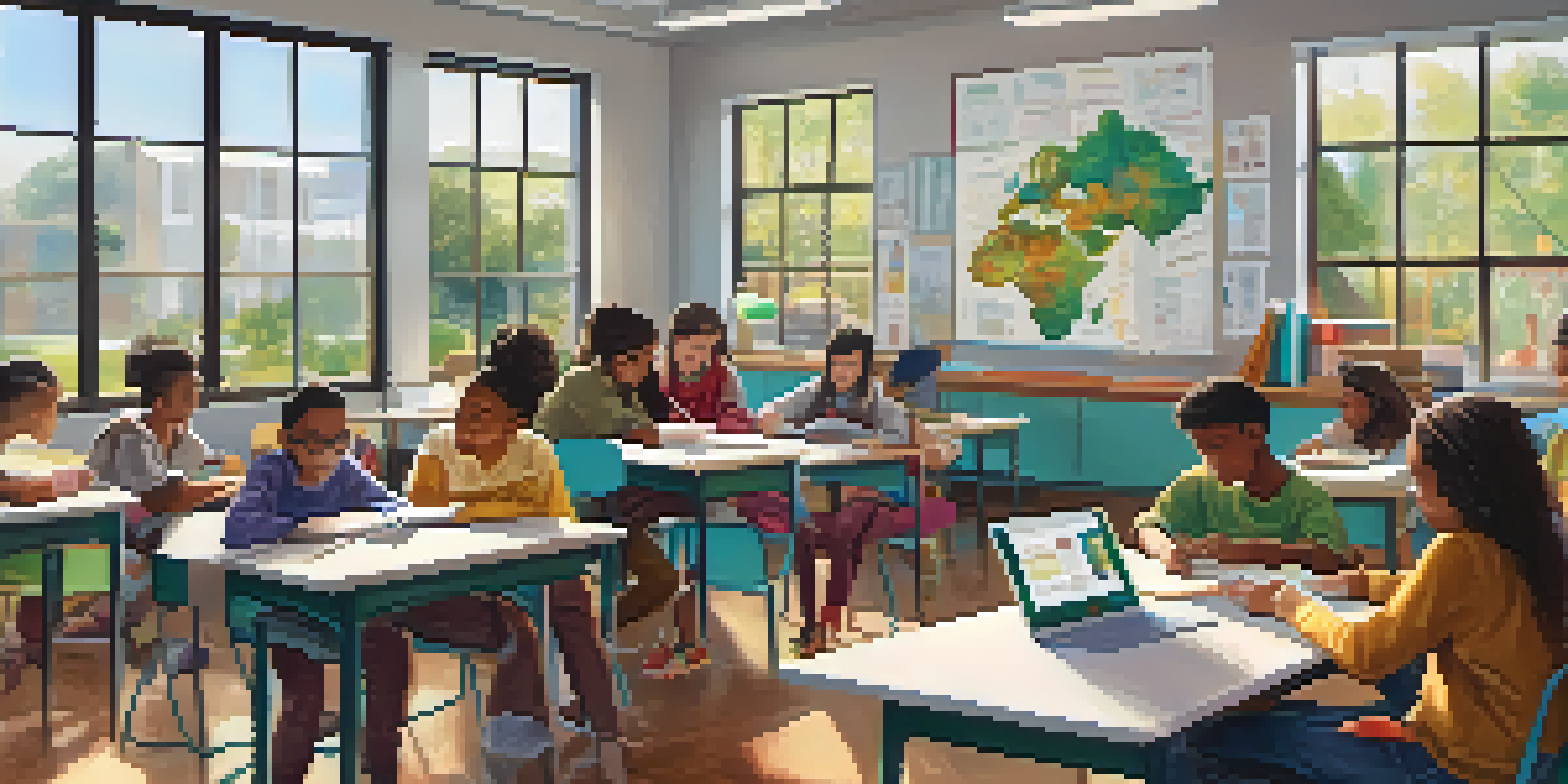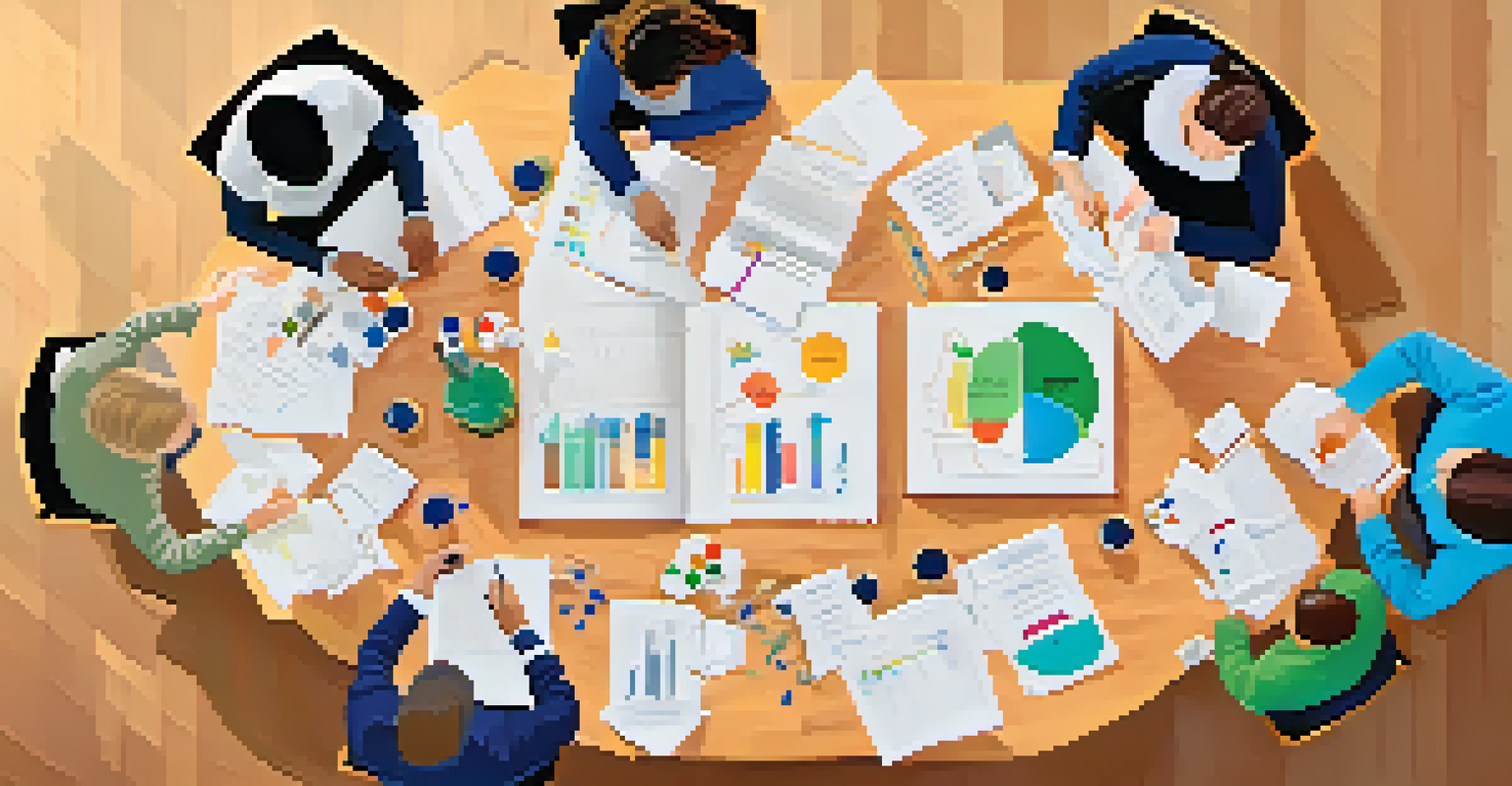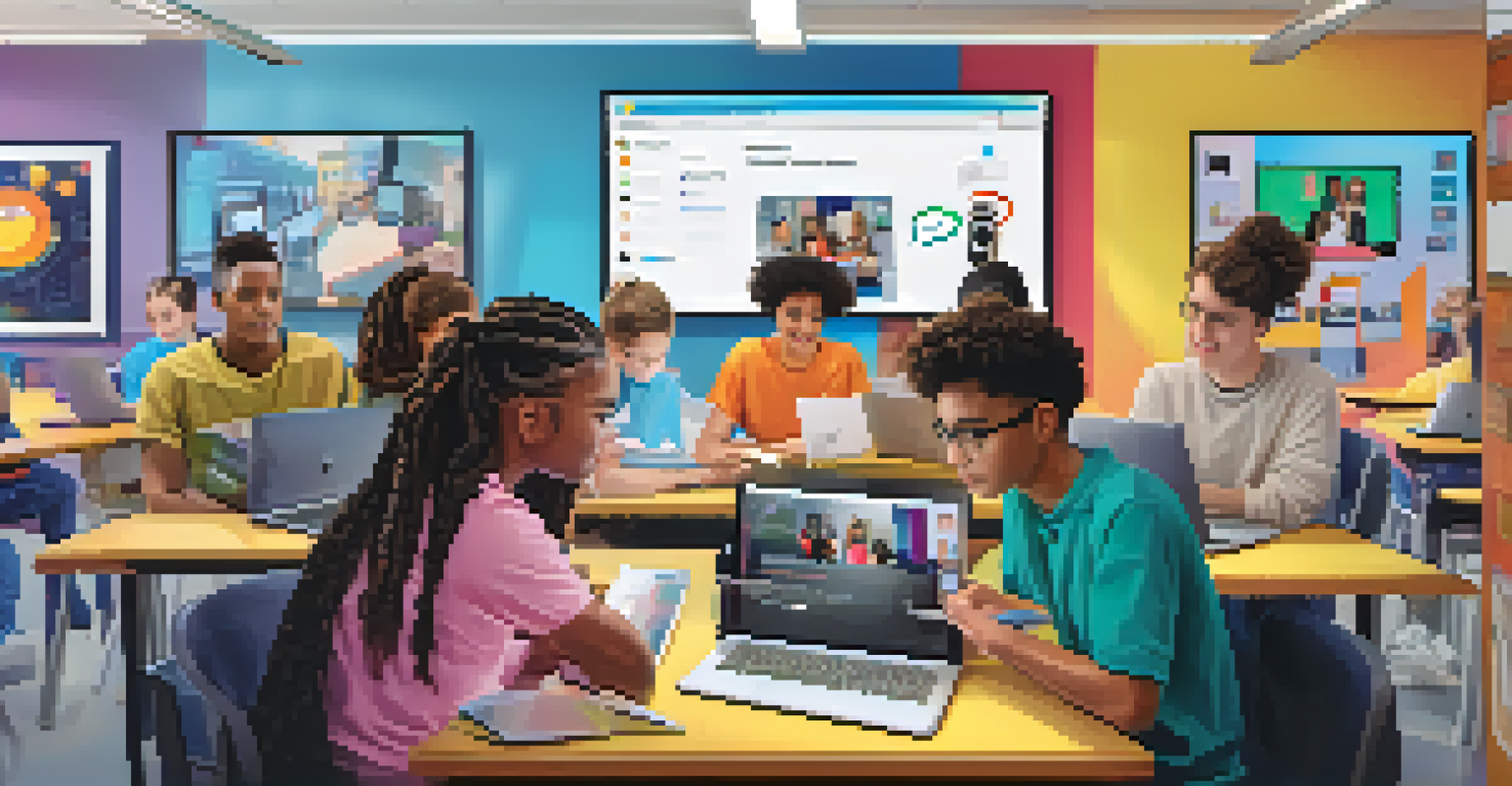Strategies for Implementing Peer Learning in Classrooms

Understanding Peer Learning and Its Benefits
Peer learning is a collaborative educational approach where students learn from each other. It's not just about sharing knowledge but also about developing critical thinking and communication skills. This method encourages active participation, which can lead to deeper understanding and retention of information.
The greatest gift is not being afraid to question.
One of the key benefits of peer learning is that it caters to diverse learning styles. For instance, a visual learner might excel when explaining concepts through diagrams, while an auditory learner may thrive in discussions. This variety allows students to engage with content in ways that resonate with them personally.
Additionally, peer learning fosters a sense of community within the classroom. When students collaborate, they build relationships and trust, which can enhance their overall learning experience. This supportive environment often reduces anxiety and encourages risk-taking in learning.
Creating a Peer Learning-Friendly Environment
To effectively implement peer learning, it's essential to cultivate an environment that encourages collaboration. This starts with arranging the classroom layout to facilitate group work and discussions. Flexible seating can allow students to move around and interact more easily.

Setting clear expectations and guidelines is crucial for a successful peer learning experience. Teachers should outline roles within groups and establish accountability measures. This clarity helps students understand their responsibilities and fosters a sense of ownership in their learning.
Benefits of Peer Learning
Peer learning enhances critical thinking, accommodates diverse learning styles, and fosters a supportive classroom community.
Moreover, providing resources and tools to support peer learning is vital. This could include access to technology, study materials, or even training on effective communication skills. When students feel equipped, they are more likely to engage fully in the learning process.
Incorporating Structured Group Activities
Structured group activities are a fantastic way to facilitate peer learning. For example, think-pair-share exercises encourage students to reflect individually, discuss their thoughts with a partner, and then share with the larger group. This strategy promotes active engagement and ensures that everyone has a voice.
Tell me and I forget. Teach me and I remember. Involve me and I learn.
Another effective activity is jigsaw, where each student becomes an 'expert' on a specific topic before teaching it to their peers. This not only boosts confidence but also reinforces the learning of the student who teaches. It’s a win-win for everyone involved.
These activities can also be tailored to suit different subjects and learning objectives, making them versatile tools in any educator's toolkit. By blending fun with learning, students often find themselves more motivated to participate.
Utilizing Technology to Enhance Peer Learning
In today's digital age, technology can significantly enhance peer learning experiences. Tools like collaborative platforms allow students to work together on projects, regardless of their physical location. This means that peer learning can extend beyond the classroom walls.
For instance, using discussion boards or online forums fosters ongoing dialogue among students. This can be especially helpful for shy students who may feel more comfortable expressing their thoughts in writing rather than speaking up in class.
Creating Collaborative Environments
A successful peer learning environment requires careful classroom arrangement, clear expectations, and the right resources.
Moreover, incorporating multimedia resources can enrich discussions and make learning more engaging. Videos, podcasts, and interactive quizzes can provide diverse perspectives and prompt deeper conversations among peers.
Encouraging Reflection and Feedback
Reflection is a critical component of learning, and incorporating it into peer learning strategies can greatly enhance the process. After group activities, students should be encouraged to reflect on what they learned and how they contributed. This practice helps solidify their understanding and identify areas for improvement.
Feedback is another vital element that can drive peer learning success. Creating a culture where constructive feedback is welcomed can lead to significant growth for both the giver and receiver. It’s important for feedback to be specific, focused on the work rather than the individual, and delivered in a supportive manner.
By making reflection and feedback integral parts of the learning process, students can develop a growth mindset. This not only boosts their academic skills but also prepares them for future collaborative endeavors in their careers.
Assessing Peer Learning Outcomes
To understand the effectiveness of peer learning strategies, assessing outcomes is crucial. This involves looking beyond traditional tests to measure collaboration, engagement, and critical thinking skills. Educators can design assessments that focus on group projects or presentations, allowing students to showcase their collective knowledge.
Moreover, self-assessment can be a powerful tool. Encouraging students to evaluate their contributions and learning can foster a sense of accountability. This practice also helps them recognize their strengths and areas for growth in a collaborative setting.
Assessing Peer Learning Effectiveness
Evaluating peer learning requires innovative assessments that focus on collaboration, engagement, and self-reflection.
Combining peer assessments with instructor evaluations can provide a more holistic view of student learning. This multifaceted approach ensures that the benefits of peer learning are recognized and celebrated.
Overcoming Challenges in Peer Learning
Implementing peer learning is not without its challenges. One common issue is unequal participation, where some students may dominate discussions while others remain passive. To counter this, educators can assign specific roles within groups or rotate responsibilities during activities to ensure everyone engages.
Another challenge is the variability in students' knowledge levels. Some students may feel intimidated or overwhelmed when working with peers who are more advanced. Teachers can address this by grouping students thoughtfully, pairing those who can support each other’s learning, and fostering an inclusive atmosphere.

Ultimately, being proactive in addressing these challenges can help create a more effective peer learning environment. With the right strategies, educators can transform potential obstacles into opportunities for growth and collaboration.